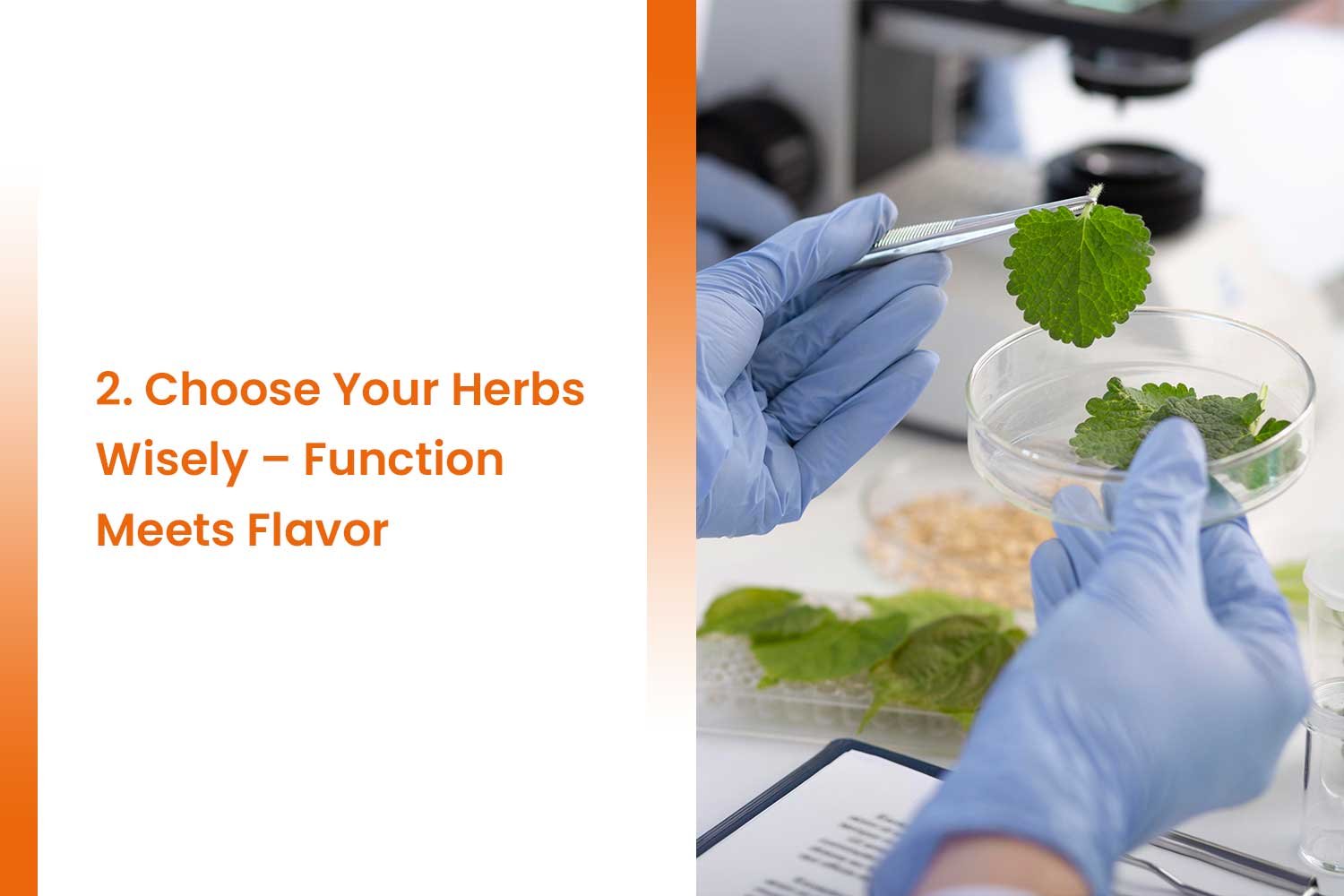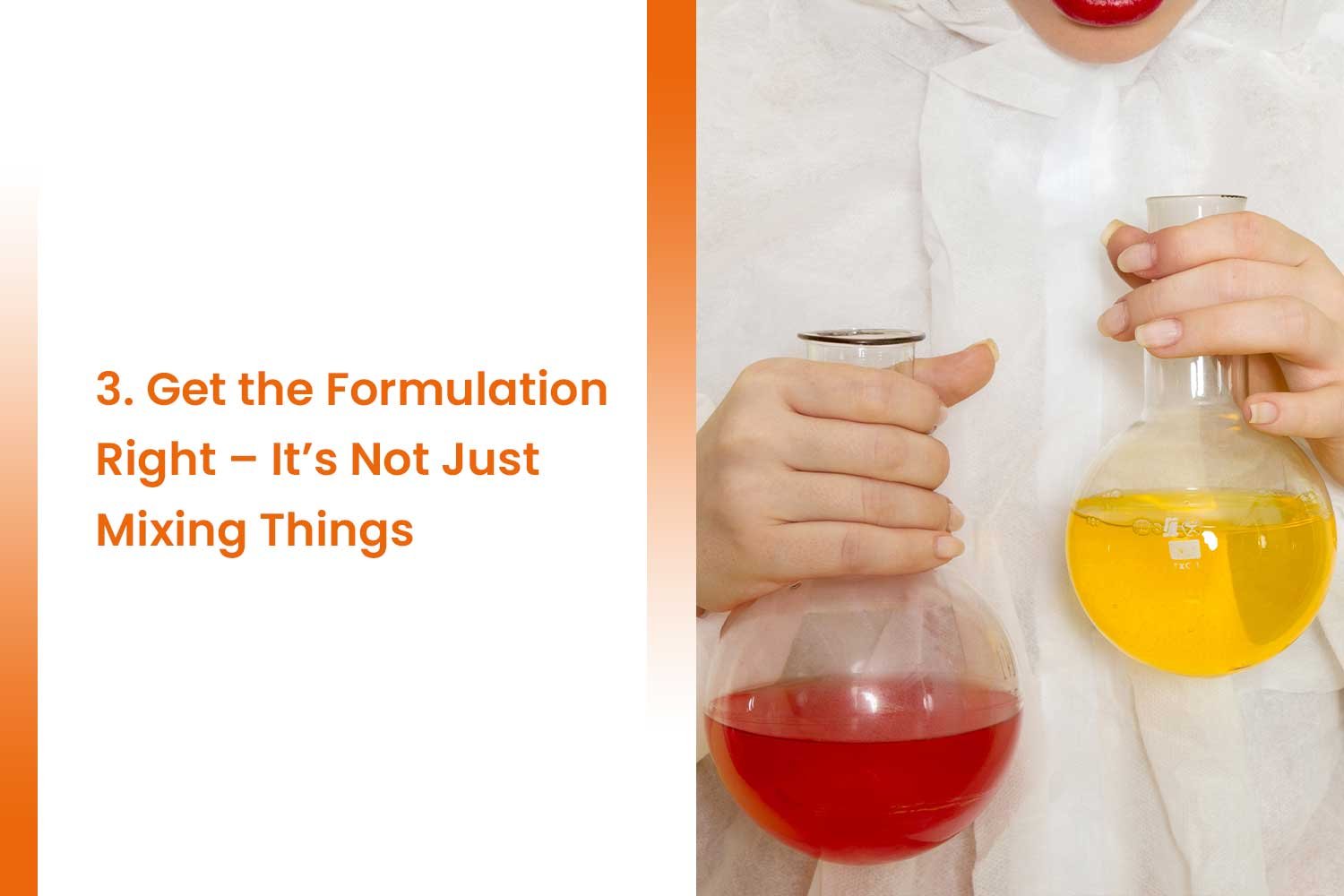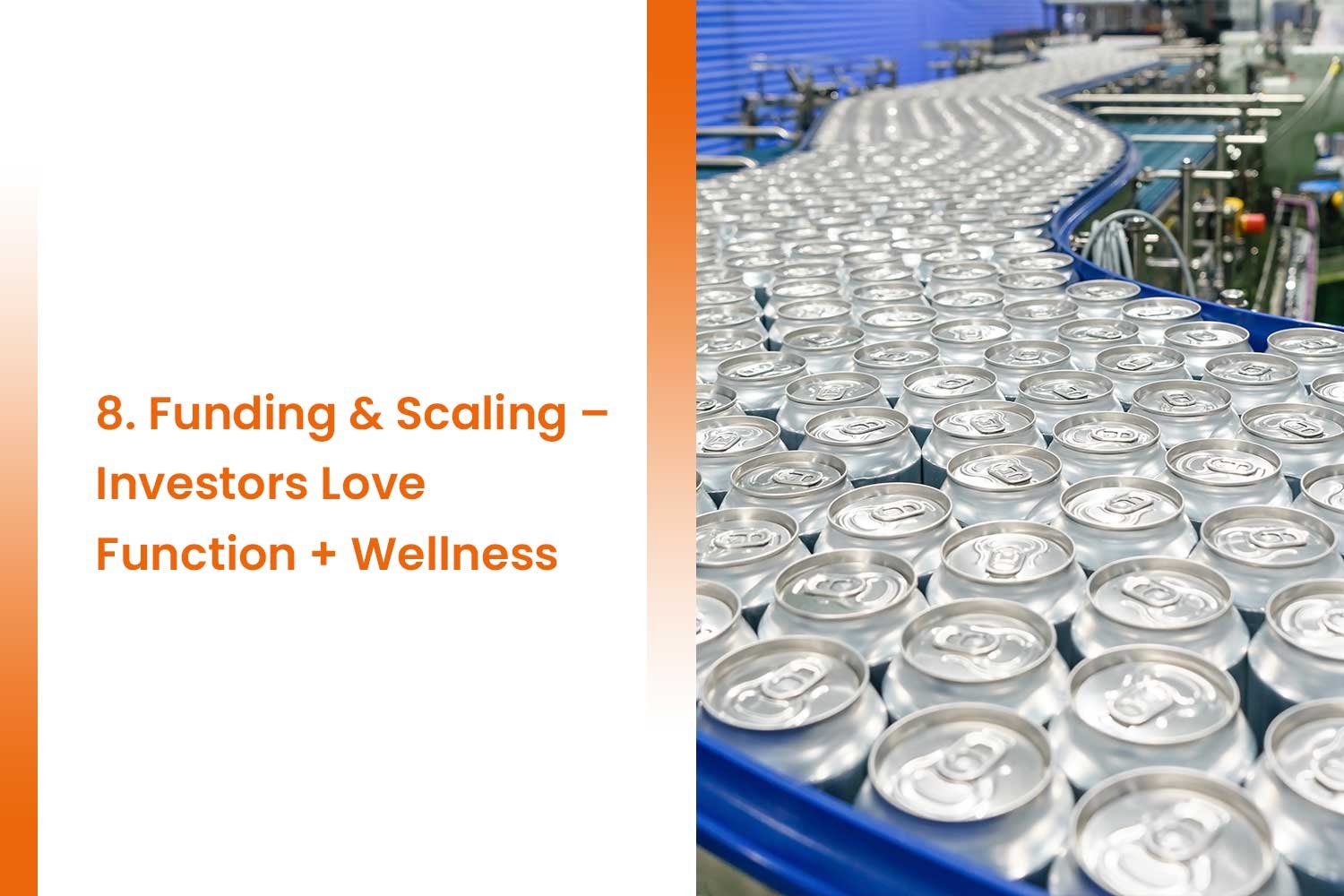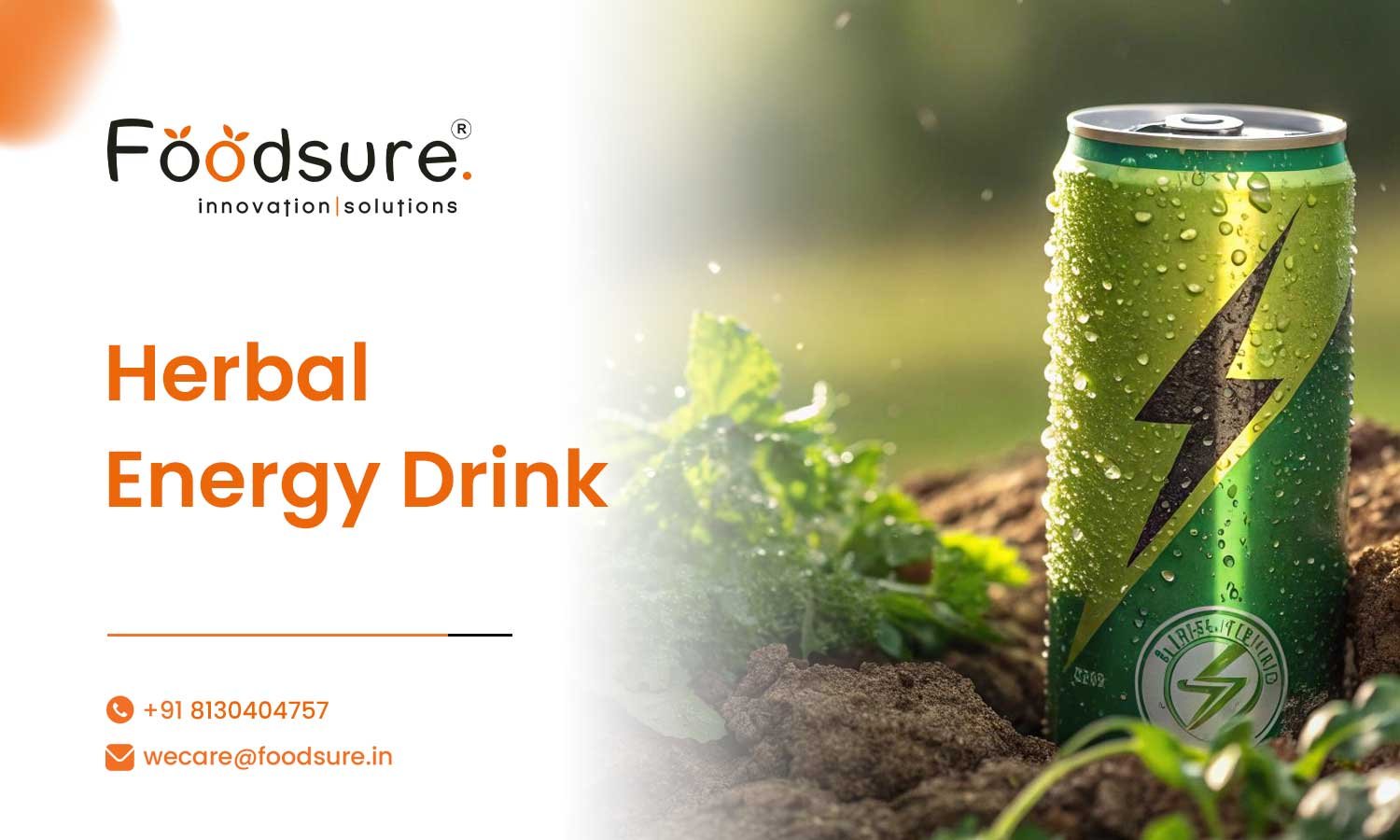Energy drinks are everywhere. The world of energy drinks is getting a big makeover. Gone are the days when people reached for sugar-loaded cans full of artificial stuff just to stay awake. No, no, not anymore. This makeover takes you to the world of innovation and health. Today’s consumers want clean energy, something that powers up their body and mind, without the crash or the guilt. Get ready for the exciting innovation, get an herbal energy drink.
These drinks use natural ingredients like Ashwagandha, Green Tea, Ginseng, or Tulsi to give you energy in a smarter, healthier way. They don’t just wake you up—they support your focus, stamina, and overall wellness.
This blog is your only guide for in-depth insights about a powerful herbal energy drink formulation, from picking the right herbs to launching it in the market. Market insights that provide you with the real value. Whether you’re a startup founder or a wellness brand, everything you need to know starts here. This is the right track for you.
The Herbal Energy Drink Market: Why Now?
Booming Growth And Changing Preferences
It is important to know about the market insights of the product to formulate one. It must be at the top of the graph with trendy ingredients. The global energy drink market is projected to reach over $86 billion by 2027, with plant-based and herbal variants leading the fastest-growing segment. In India, the energy drink sector is expanding at an impressive 20–25% CAGR, with herbal and natural energy drinks gaining rapid traction. This growth is fueled by:
- Health-Conscious Consumers: Let’s agree that millennials and Gen Z are reading labels, seeking out natural ingredients, and avoiding artificial additives. As the current folks want refreshing and healthy.
- Demand for Functional Benefits: Today’s consumers want more than just a caffeine buzz; they want drinks that support stamina, focus, immunity, and stress management. Ingredients that are functional and make their day super energetic.
- Shift Away from Synthetic Stimulants: Concerns about the side effects of synthetic caffeine and sugar-laden drinks are driving people toward herbal and adaptogenic alternatives.
Who’s Buying?
No, no, no, you don’t have to choose a set of target audiences. This drink would be loved by everyone. Let us take care of everything. Your core audience includes fitness enthusiasts, busy professionals, students, and anyone looking for a sustained, crash-free energy boost. Many are also interested in vegan, gluten-free, and clean-label options.
Formulating a great herbal energy drink is not just about mixing herbs into water. You need to understand:
- Which herbs work well together
- How to balance taste and nutrition
- How to make it safe, shelf-stable, and approved by FSSAI.
Worrying? No need, just connect with us and see the successful transformation even better than Instagram reels these days.

Steps To Launch An Herbal Energy Drink
Launching an herbal energy drink requires careful planning—from selecting natural ingredients to ensuring safety and market appeal. Here’s a step-by-step guide to help you get started.
1. Understand The Market: Health Is The New Energy
As we can see, the current preferences are changing day by day; people are not just quick energy boost, but something that keeps them energetic throughout the day. They want clean energy, without the crash, without the guilt. The global energy drink market is expected to hit over $100 billion in the next few years, and herbal/functional drinks are leading the innovation front. Be the one who can generate the opportunity by providing this to the mass audience. Go for an herbal energy drink formulation now.
What people want:
- Natural ingredients they recognize
- Low sugar or no added sugar
- Functional benefits (focus, stamina, calm energy)
- Sustainable and eco-conscious brands
Insight: The herbal energy drink space isn’t niche anymore. It’s where the future of energy drinks is heading.

2. Choose Your Herbs Wisely – Function Meets Flavor
Not all herbs are created equal. Choose every herb wisely, and one that matches your vision. The ones you use should be proven, safe, and functional. Here’s a quick rundown of popular herbal energy boosters:
| Herb | What It Does |
| Ashwagandha | Reduces stress, improves stamina |
| Green Tea | Natural caffeine + antioxidants |
| Guarana | Strong natural stimulant (double the caffeine of coffee) |
| Ginseng | Boosts energy, supports brain function |
| Rhodiola | Enhances endurance and reduces fatigue |
| Tulsi (Holy Basil) | Adaptogen helps manage stress |
Tip: Pair herbs not just for their benefits, but for flavor balance. Some herbs are bitter and need blending with fruit extracts or natural sweeteners like stevia, honey, or dates.

3. Get The Formulation Right – It’s Not Just Mixing Things
Herbal energy drink formulation is everything. A poorly balanced herbal drink can taste bad, separate over time, or even lose its benefits during processing.
Things to consider:
- Water-solubility of herbal extracts
- Stability of ingredients during shelf life
- Flavor masking if herbs have a strong taste
- Caffeine content – must be within regulatory limits
- Preservatives or natural preservation methods
- Nutrient claims – be sure they’re backed by data
Pro Tip: Work with a beverage technologist or formulation expert to get this right. The right formulation can make or break your brand. Or simply connect with us now.

4. Compliance & Certification – Don’t Skip This Step
In India, you’ll need FSSAI (Food Safety and Standards Authority of India) approval before launching any energy drink. This includes:
- Ingredient safety documentation
- Label review (especially if you’re claiming “Herbal” or “Energy”)
- Nutritional facts & claims verification
- Packaging compliance
Optional (but powerful) certifications:
- Organic (if using certified herbs)
- Ayush Approved (for traditional herbal formulations)
- Vegan / Plant-Based / Clean Label
Real Example: A Mumbai-based startup had to delay their product for 3 months because their “gut detox” claim wasn’t backed by science. Always validate your claims before printing them on the label.
Important: Without FSSAI compliance, your product can be pulled from shelves—even if it’s doing well in the market.

5. Packaging And Shelf Stability – Looks Matter, But So Does Science
Herbal energy drinks often come in glass bottles, PET cans, or Tetra Packs, depending on the shelf life and positioning. Think about:
- UV protection for sensitive herbal actives
- Oxygen control to prevent oxidation
- Recyclability for eco-conscious consumers
- Label design – clean, informative, and appealing
Shelf Stability: Herbal drinks can separate or lose color/flavor if not processed well. Use cold fill, hot fill, or pasteurization based on your ingredients.
6. Branding & Storytelling – Sell The Feeling, Not Just The Drink
People buy herbal drinks not just for energy, but for the experience. Your brand should speak to that:
➔ What’s your brand’s purpose?
➔ Who is your drink for? (Athletes, corporate professionals, students?)
➔ Is your messaging calm, powerful, healing, or bold?
A great herbal energy drink formulation needs to blend science, tradition, and modern design. Don’t just sell herbs. Sell clarity, balance, focus, or calm energy. And you will see your brand touching heights.

7. Test The Market Before A Full Launch
Before going big, go small:
➔ Launch with a few hundred bottles in select cafes, wellness stores, or through pop-up events
➔ Collect real feedback on taste, feel, and energy effect
➔ Use Instagram polls, tasting sessions, and influencer collabs to build early buzz
Insight: Use this data to refine your product before scaling. It saves money—and builds community.

8. Funding & Scaling – Investors Love Function + Wellness
If your herbal energy drink shows traction, investors will take an interest. What they look for:
➔ A differentiated product
➔ Early proof of demand
➔ Clear branding and strong story
➔ A founder who understands health + hustle
Explore:
➔ Angel investors
➔ Health-focused VCs
➔ Strategic partnerships with wellness brands
➔ Government startup grants (India has several for food innovation)

Case Study: Dosha – Ayurveda In A Can
What’s Dosha?
Let’s take you to a world where people have already started. A UK-based herbal drink brand that mixes ancient Indian Ayurveda with modern wellness. Think light, sparkling drinks that help balance your body and mind, without caffeine or sugar.
Who Started It?
A bunch of wellness entrepreneurs and Ayurvedic experts who wanted to bring clean, plant-based energy to the world.
What Makes It Different?
➔ Inspired by Ayurveda: targets your body’s doshas (Vata, Pitta, Kapha)
➔ No caffeine, no added sugar, under 23 kcal per can
➔ Packed with adaptogens and botanicals
➔ 100% vegan + clean label
How Did They Launch?
➔ Showcased at Gulfood 2025
➔ Tested in health stores, yoga studios, and wellness platforms
➔ Strong Insta & TikTok buzz with hashtags like #BalanceYourDosha
➔ Focused on education, not just sales
Who Loved It?
Millennials, Gen Z, and wellness seekers who want energy, but naturally. Especially yoga lovers and health-conscious folks, tired of sugary energy drinks.
What Worked Well?
➔ Clear message: Balance your energy, naturally
➔ Great taste + real function
➔ Clean design + authentic story
➔ Smart sampling before scaling up
The Results?
➔ Built a strong fanbase in the UK & UAE in under a year
➔ High repeat orders
➔ Attracted health-focused investors
➔ Now placed in premium wellness stores
Getting Funded: Wellness + Function = Investor Magnet
If your herbal energy drink has early traction, you could attract:
➔ Angel investors focused on health & wellness
➔ Startup grants (India’s F&B startup support is growing)
➔ Strategic food industry partnerships
➔ Retail partnerships for distribution
You’re Not Just Launching a Drink, You’re Launching a Lifestyle
A successful product formulation is made with the right decision at the right time. A herbal energy drink isn’t just about herbs or caffeine—it’s about offering energy with purpose. You’re stepping into a powerful space that combines health, tradition, and modern innovation.
So go all in—with clean ingredients, a strong mission, great taste, and true value with Foodsure. People are tired of fake promises. If you deliver something honest and effective, the market will notice. Contact our herbal energy drink recipe formulation experts today and get succeed in your business!
Launch Your Herbal Energy Drink with Experts
10+ years of expertise • 95+ brand launches • ₹30Cr+ client revenue
Rated 4.8⭐ by growing F&B brands.


